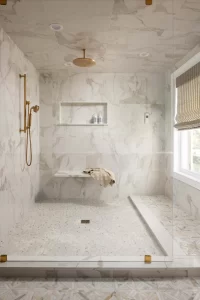Smart Home Technology for Over 50s

Smart home devices and systems communicate wirelessly between themselves using Wi-Fi, electrical wiring or smart bridge technology with an app to enhance life quality and provide convenience and efficiency that enhance quality of living.
Smart thermostats learn homeowners’ schedules to avoid wasteful heating and cooling usage, helping reduce energy bills. Meanwhile, other appliances can prevent costly repairs while decreasing the risk of water or fire damage.
Security
Smart homes allow homeowners to centrally control appliances, lights, audio speakers and security cameras from one central hub, using touch screen devices or mobile apps for management.
Smart technology offers homeowners both convenience and financial savings. By monitoring energy use and turning off lights/devices when no one is present in a room, these smart home systems can track energy use more accurately, reduce heating/cooling costs significantly, as well as automatically turn off lights when no longer needed.
Smart appliances and devices can also be programmed to communicate with each other, alerting homeowners when the washing machine has finished or they have left a door or window open. Through interconnected sensors, smart homes also help keep an eye on family members and pets by monitoring activity remotely and receiving real-time notifications and alerts via smartphone – especially useful if they have children or care for elderly loved ones; in a survey conducted by YouGov 63% of those over 50 cited family safety as their main motivator for adopting such technology.
Entertainment
Smart technologies provide home entertainment options tailored specifically to each user’s lifestyle and habits, from waking up with piped music/bhajans and turning off lights at bedtime, to personalizing presets that meet each person’s individual needs and preferences.
Home automation technologies also help proactively protect and manage homes. For instance, smart water leak and moisture sensors can monitor for changes and notify homeowners accordingly, potentially averting costly water damage such as from burst pipes or moldy basements before it occurs.
An effective smart home requires a reliable internet connection with fast download speeds to ensure all devices can connect correctly. Once connected, users can manage devices through one app on their smartphone – including intelligent thermostats, lighting systems, security cameras and appliances. Homeowners may even opt for do-it-yourself kits starting in the mid $200s for automation purposes.
Energy
Smart homes enable residents to keep tabs on and manage their energy use more effectively. Many smart devices feature built-in self-learning capabilities that learn their owners’ habits to work most efficiently for them.
Homeowners using these technologies can easily manage applications and products through mobile phones, voice control or physical remote controls. Homeowners can schedule or automate tasks such as turning appliances on/off; setting thermostats/lighting; checking on children/elderly loved ones/pets; monitoring water use usage etc.
Some smart devices also include built-in sensors to distinguish between residents, visitors, and even pets; alerting neighbors and law enforcement if suspicious activities take place. While it requires an upfront investment of time and money, smart technology can make life more comfortable while saving energy costs; many insurance companies offer discounts or rebates when installing certain power-saving smart home devices and appliances.
Maintenance
Smart technology market continues to evolve with new inventions, devices and systems being made available. Homeowners over 50 may benefit from these smart technologies in terms of convenience as well as cost savings in various ways.
These innovations include the ability to remotely turn off or on appliances using mobile apps or voice command, while monitoring security and energy use with ease. Smart sensors can even be programmed to switch off lights when an area is unoccupied and cut energy consumption and costs down significantly.
Smart home technology can even integrate with washer and dryer sets, enabling you to track laundry as it goes through its cycle and receive text message notifications when it has finished. While these technologies may seem like luxury today, they will likely become mainstream over time. Just keep in mind that smart home tech requires ongoing maintenance like updates and troubleshooting as well as following device battery charging instructions so as to extend its life and ensure longevity.


